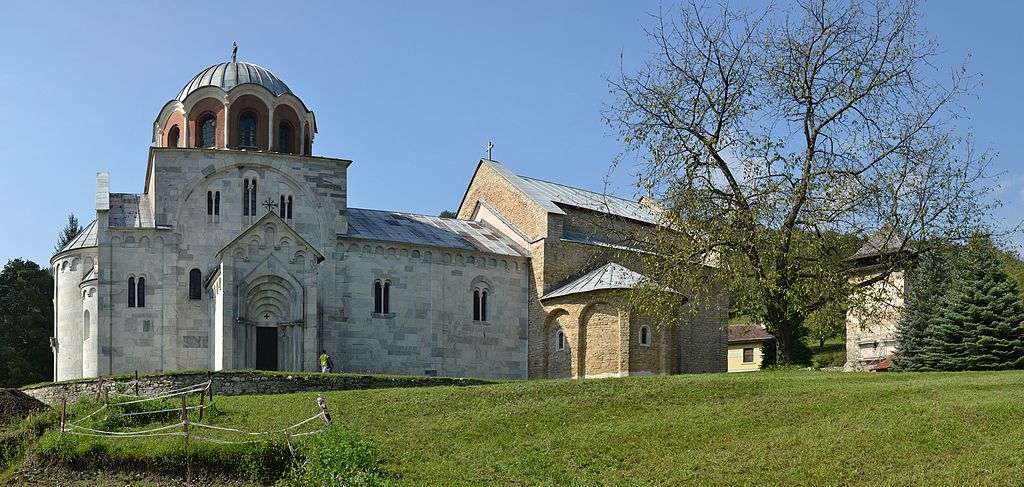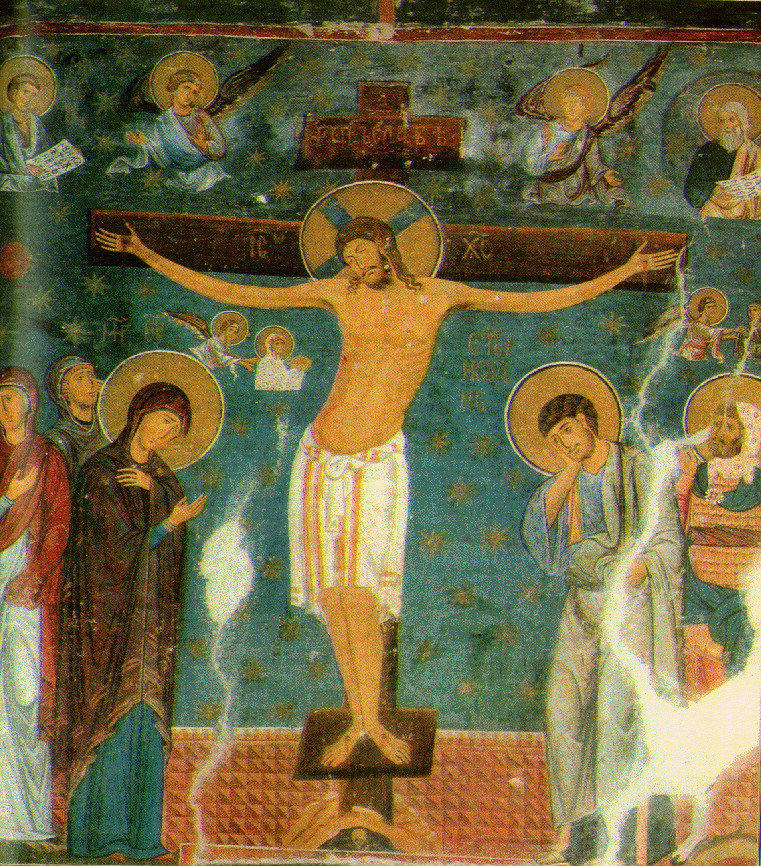Serbia in eastern Europe is one of our homeschool countries-of-the-week, so why not spend a few minutes today learning about one of Serbia’s World Heritage Sites: the Studenica Monastery.

The Studenica Monastery is one of the most historically significant medieval monasteries in eastern Europe:
Studenica Monastery, located in the Raška district of central Serbia, is the largest and richest of Serbia’s Orthodox monasteries. It was founded near Studenica river in the late 12th century by Stefan Nemanja, also known as Saint Simeon, who established the medieval Serbian state. His remains, as well as those of his wife Anastasia and of the first Serbian king, Stephen the First-Crowned, rest in this monastery. It is there that Stefan Nemanja’s youngest son, Saint Sava Nemanjić, initiated the independent Serbian Orthodox Church in 1219 and wrote the first literary work in the Serbian language. The complex’s two principal monuments, the Church of the Virgin and the King’s Church, enshrine priceless collections of 13th- and 14th-century Byzantine paintings. Studenica became the most important monastery in Serbia, and has remained so to the present day.
Studenica is an outstanding and well-preserved example of a Serbian Orthodox Church monastery. Enclosed by an almost circular wall strengthened with two fortified gates, it features an array of exceptional monuments, including the main church at the centre and monastic facilities along the encircling wall. Churches and hermitages are located in the area surrounding the monastery, as well as the quarries and vestiges of a settlement for the workers who mined and shaped the marble used to build the Church of the Virgin.
The Church of the Virgin, which served as a model for other monastic churches in the region, was built in the distinctive Raška School of eastern medieval church architecture that blended the Romanesque and Byzantine styles. The exterior of the domed single-nave church is reminiscent of Italian Romanesque cathedrals, while interior wall paintings in the naos and the sanctuary reflect trends of monumental paintings that emerged after the fall of the Byzantine capital of Constantinople to the Crusaders. Characterized by a new concept of space and a new expressiveness, these paintings represent a milestone in the histories of both Byzantine and Western art.
The modestly scaled King’s Church was founded in 1314 by King Milutin, who commissioned the renowned Salonican painters Michael and Eutychius to decorate the church’s interior with frescoes. At the King’s Church these court painters created the most perfect expression of their style. Their remarkable Cycle of the Life of the Virgin Mary is among the leading works of Byzantine art, its density of forms, volumetric rendering of faces as well as bright colors, shadows, and light being perfectly executed a secco. (World Heritage Centre #389)
You can find a gallery of additional photos of the Studenica Monastery on the World Heritage Centre’s website.

World Heritage Sites are cultural or natural landmarks of international significance, selected by their home countries and recognized by the United Nations Educational, Scientific, and Cultural Organization. More than a thousand such sites have been designated in over 160 countries, and we feature one every Wednesday, drawn from one of our homeschool countries-of-the-week. You can find a complete list of World Heritage Sites online at the World Heritage Centre and in Wikipedia.
The World Heritage Centre also has a free and comprehensive World Heritage education kit for teachers, as well as a wonderful full-color wall map of World Heritage Sites, available for the cost of shipping. Why not add them both to your own homeschool library. 🗺
What world treasures have you explored in your homeschool this Leo Term? 🇷🇸
❡ The great globe itself: This is one of our regular Homeschool Geography posts featuring cultural and natural sites of international importance. Print your own copy of our River Houses World Heritage Calendar and follow along with us as we tour the planet, and add your name to our weekly mailing list to get great homeschool teaching ideas delivered right to your mailbox all through the year. 🌐
❡ Print this little lesson: Down at the bottom of this post you'll find a special "Print" button that will let you create a neat and easy-to-read copy of this little lesson, and it will even let you edit and delete sections you don't want or need (such as individual images or footnotes). Give it a try today! 🖨
❡ Books in the running brooks: You can always turn to your River Houses almanac, atlas, and history encyclopedia for more information about any of our countries-of-the-week. The almanac has a lengthy section with detailed profiles of all the nations of the world; the endpapers of the atlas are indexes that will show you where all of the individual national and regional maps may be found; the history encyclopedia has a comprehensive collection of national histories in an appendix; and you can find additional illustrations, flags, and other mentions through the indexes in each of these volumes. For an ideal little lesson, just write the name of the Weekly World Heritage Site on your homeschool bulletin board, find its location in your atlas, read the WHC's brief description aloud, look at a picture or two, and you're done. Over the course of the year, without even realizing it, your students will absorb a wealth of new historical, geographical, and cultural information. 📚
❡ Homeschool calendars: We have a whole collection of free, printable, educational homeschool calendars and planners available on our main River Houses calendar page. They will help you create a light and easy structure for your homeschool year. Give them a try today! 🗓
❡ Support our work: If you enjoy our educational materials, please support us by starting your regular Amazon shopping from our very own homeschool teaching supplies page. When you click through from our page, any purchase you make earns us a small commission at no extra cost to you. Thank you for helping us to keep going and growing! 🛒
❡ Join us! The aim of the River Houses project is to create a network of friendly local homeschool support groups — local chapters that we call “Houses.” Our first at-large chapter, Headwaters House, is now forming and is open to homeschoolers everywhere. Find out how to become one of our founding members on the Headwaters House membership page. 🏡




